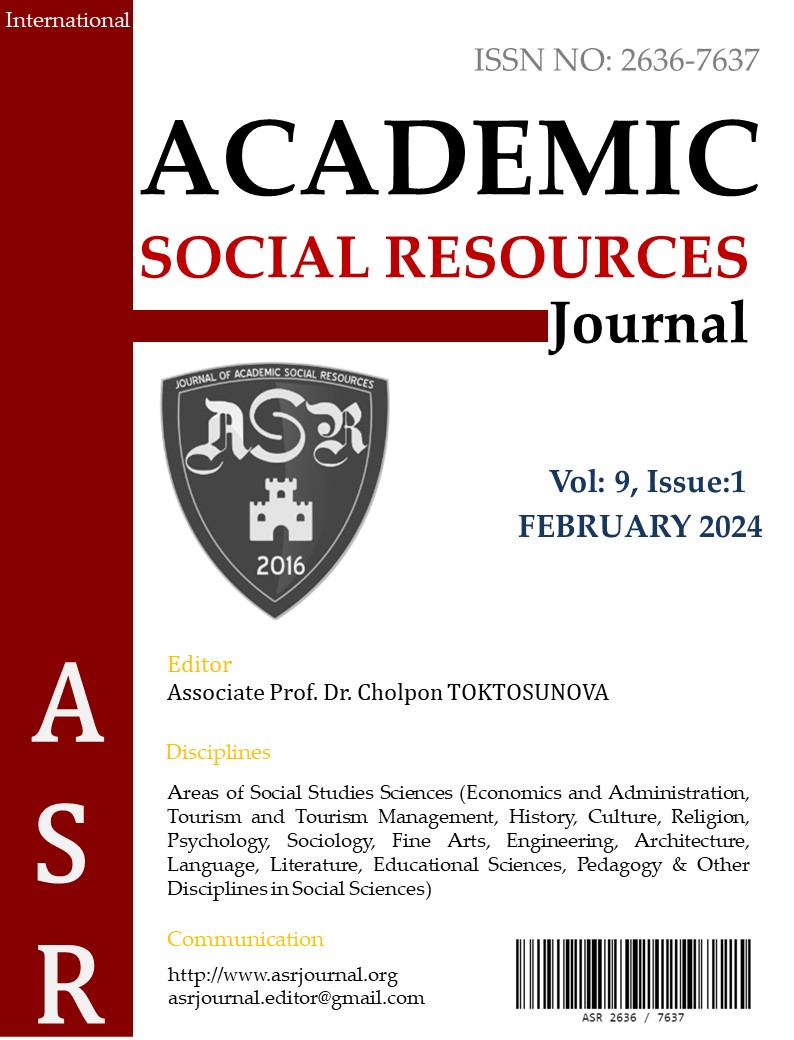Author :
Abstract
İslam düşünce geleneğinde özellikle de tasavvufî düşüncede insan-âlem münasebetinin izahında insanın küçük âlem, âlemin ise büyük âlem olarak nitelendirildiği küçük âlem-büyük âlem (âlem-i sağîr-âlem-i kebîr) fikrine yer verilir. İlk nüveleri Kindî’de (ö. 252/866[?]) görülmeye başlayan bu düşünce daha sonra geniş bir şekilde İhvân-ı Safâ, İbnü'l-Arabî (ö. 638/1240), Mevlânâ (ö.672/1273), Azîzüddîn Nesefî (ö. 700/1300[?]), Abdülkerîm el-Cîlî (ö. 832/1428) ve Erzurumlu İbrahim Hakkı’da (ö. 1194/1780) görülmektedir. Tasavvufî düşünce geleneğinde insan ile âlem arasında bir mütekâbiliyetin öne çıktığı, insanın âlemin bir nüshası olması, kevn-i câmi' oluşu (birleştirici varlık) ve illet-i gâiyye olması sebebiyle onun zâhiren küçük âlem gibi görünse de bâtınen büyük âlem olduğu kanaati yaygındır. Bu çalışmada İslam düşünce geleneğindeki küçük âlem-büyük âlem (âlem-i sağîr-âlem-i kebîr) düşüncesinin Erzurumlu İbrahim Hakkı’nın eserlerinde nasıl yer bulduğu tespit edilmiştir. Tasavvuf alanında bu hususta yapılan müstakil bir çalışmanın olmayışı ve bu mevzûnun İslam düşünce geleneğinde insan-âlem ilişkisinin anlaşılması noktasında mühim bir yerinin olması konunun önemini göstermektedir. Erzurumlu İbrahim Hakkı insan ile âlem arasındaki benzerlikleri, insanın felekler âlemi ile benzerliği, yaratılış merhaleleri benzerliği, insandaki kötü ahlâkın hayvanlardaki sûretlerlerle benzerliği ve diğer bazı benzerlikler üzerinden ele almıştır. Erzurumlu İbrahim Hakkı’nın dikkat çektiği bu benzerliklerin, tasavvurî (kurgusal) ve muhayyel (hayalî) metin inşasına yönelik bir söylem biçimi değil, ma’rifetullâhı elde etme sürecinde epistemolojik bir gayeye matuf olduğu anlaşılmaktadır.
Keywords
Abstract
In the tradition of Islamic thought, especially in Sufi thought, the idea of the small universe-big universe (ālam al-saqīr-ālam al-kabīr), in which the human being is characterized as the small universe and the universe as the big universe, is included in the explanation of the relationship between man and the universe. This idea, the first glimpses of which appear in al-Kindī, is later seen in Ikhwān al-Safā, Ibn al-ʿArabī, Mawlānā, ʿAbd al-Karīm al-Jīlī, Azīz al-Dīn Nesefī and Erzurumlu Ibrahim Hakki. In the tradition of Sufi thought, there is a widespread belief that there is a mutuality between the human being and the universe, that the human being is a copy of the universe, that he is the unifying being (kawn-i jāmi') and that he is the illet-i gāiyya, and that he is the great universe in the bosom, even though he appears to be the small universe in appearance. In this study, it has been determined how the idea of the small universe-big universe (ālam-i sağīr-ālam-i kebīr) in the tradition of Islamic thought finds a place in the works of Erzurumlu Ibrahim Hakki. The lack of an independent study on this subject in the field of Sufism and the fact that this subject has an important place in understanding the human-universe relationship in the tradition of Islamic thought shows the importance of the subject. Erzurumlu Ibrahim Hakki discussed the similarities between human and the universe through the similarities between human and the universe of the heavens, the similarity of the stages of creation, the similarity of bad morals in man with the forms in animals, and some other similarities. It is understood that these similarities that Erzurumlu Ibrahim Hakki draws attention to are not a form of discourse for the construction of a fictional and imaginary text, but an epistemological goal in the process of obtaining ma'rifatullâh.





